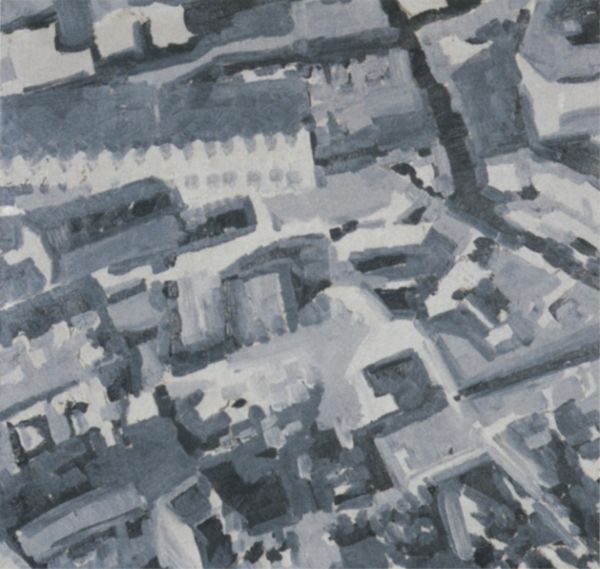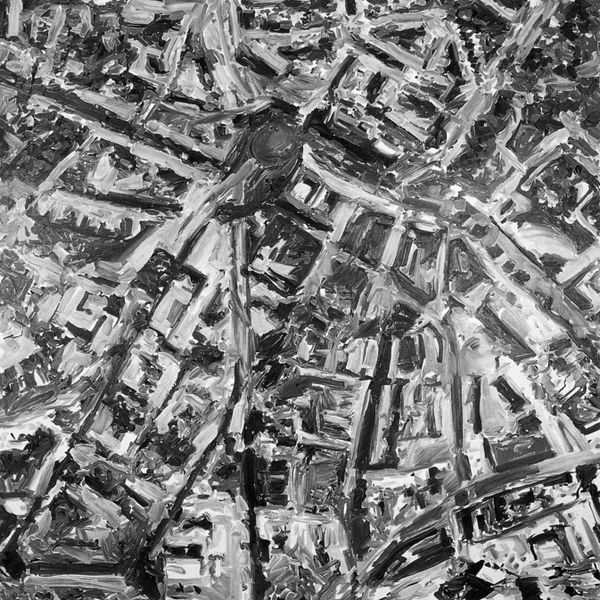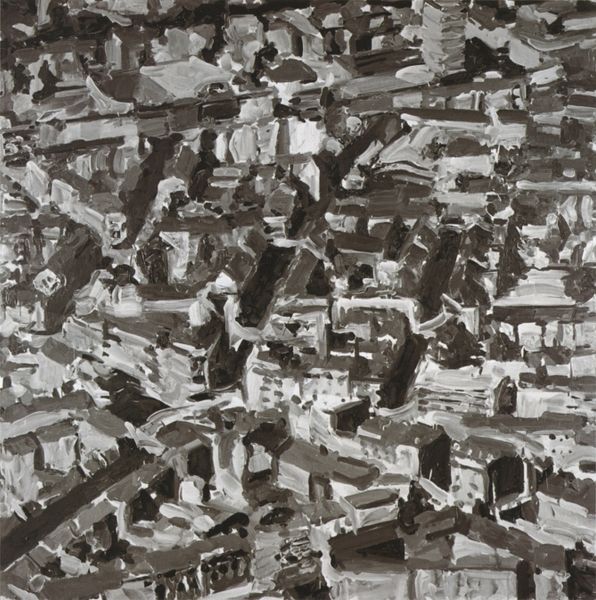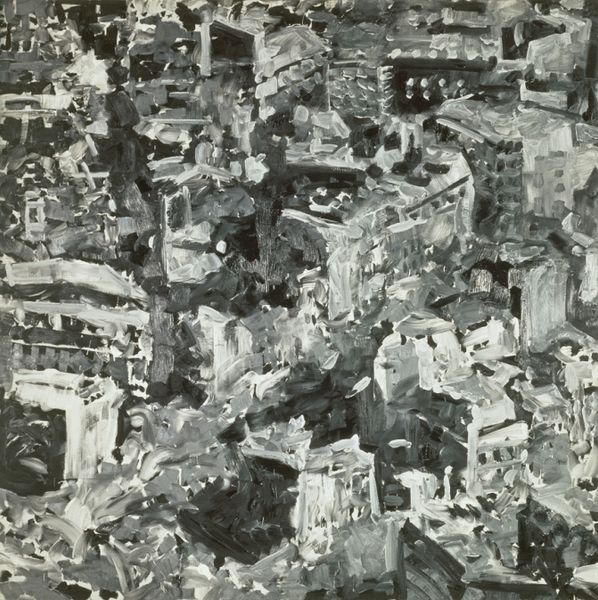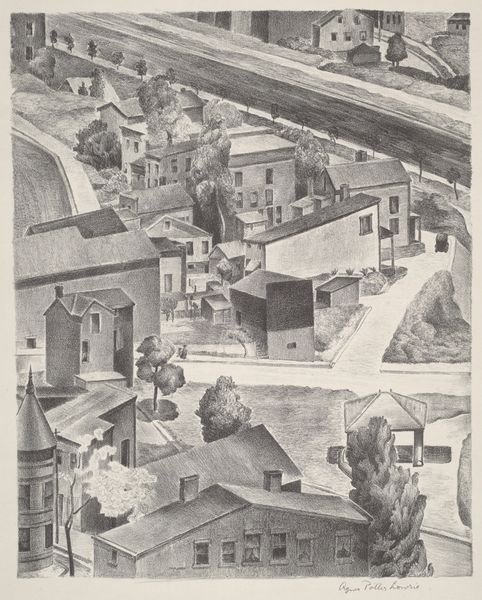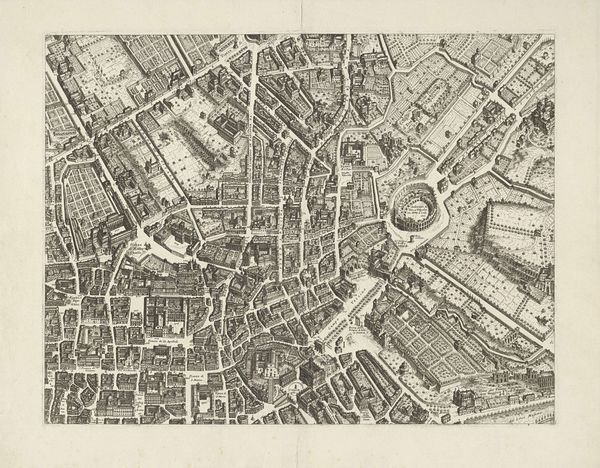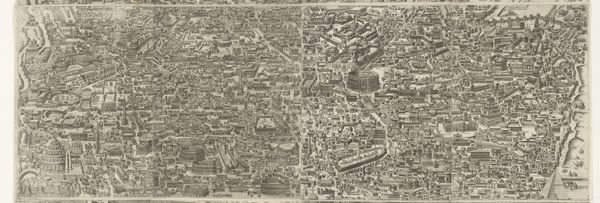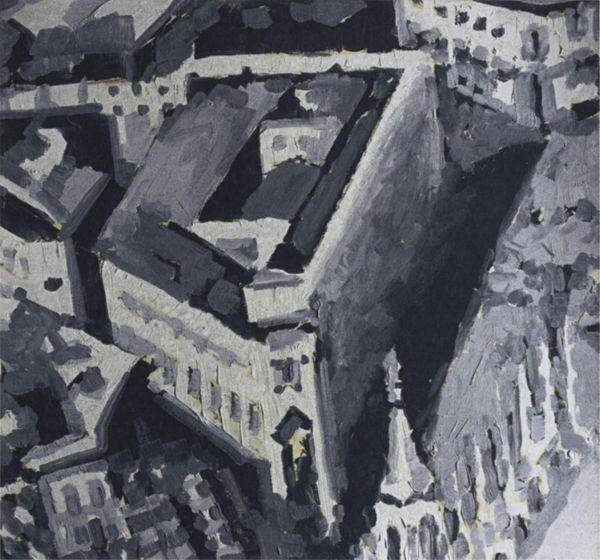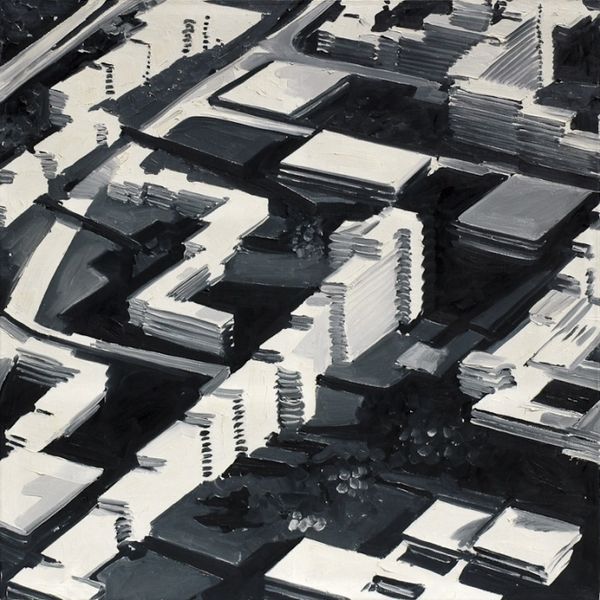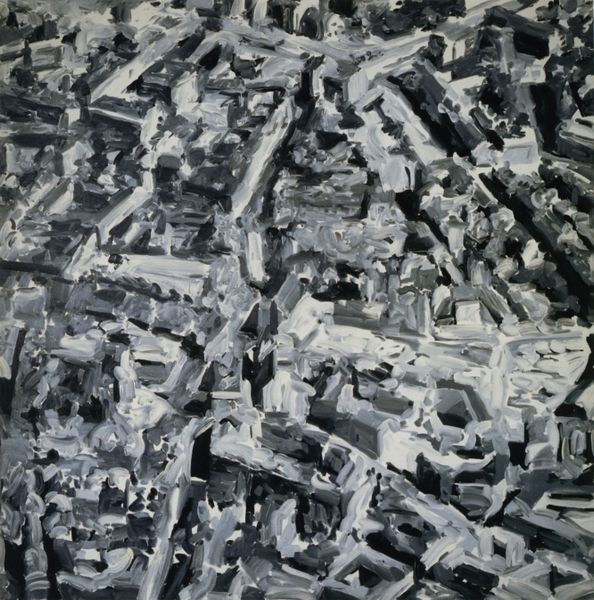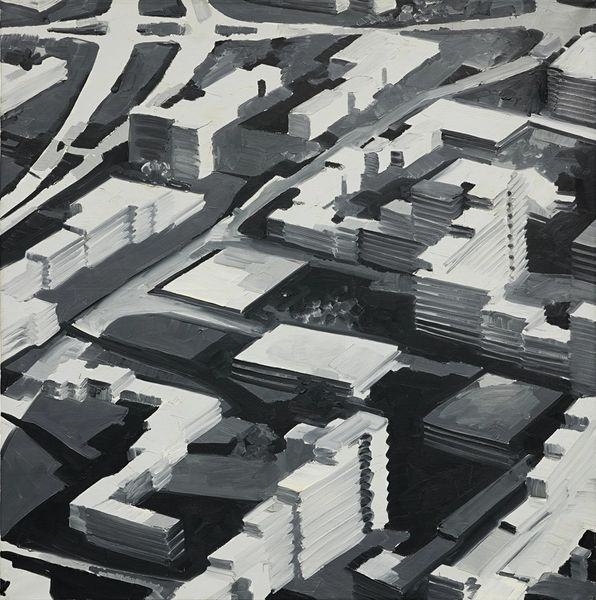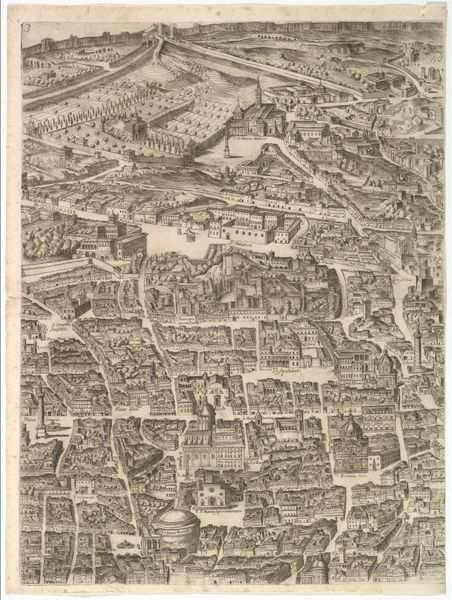
photography
#
urban landscape
#
urban cityscape
#
photography
#
capitalist-realism
#
pop-art
#
cityscape
#
modernism
Copyright: 2019 Gerhard Richter - All Rights Reserved
Curator: "Townscape Mü" by Gerhard Richter, created in 1968, offers an aerial perspective on an urban environment. It almost seems like a photograph bleached of its colors, a study in greyscale. Editor: It's compellingly claustrophobic. I'm immediately struck by the density, the sheer packed-together-ness of these buildings. It evokes a sense of being overwhelmed by urban sprawl, and perhaps even feeling trapped within it. Curator: That sensation resonates with Richter’s broader project, particularly his interest in confronting Germany’s recent history. These aerial views became increasingly prevalent during and after World War II for surveillance, for bombing campaigns. This piece, created more than twenty years after the end of the war, speaks, in my opinion, about reconstruction, and also about monitoring, about the potential of a new, different type of society in West Germany. Editor: Exactly. The neutrality of the grayscale further emphasizes that clinical, almost detached viewpoint. Richter painted from photographs, deliberately blurring them, a practice that served as a response to the uncritical adoption of imagery that characterized much of postwar Germany. Curator: The symbolism extends, I think, even into the choice of an aerial view. Traditionally, bird's-eye views represent clarity, and power, like God's eye view of all events, and of everything on Earth. But Richter seems to subvert that, using that perspective to suggest something more akin to societal scrutiny. We are seeing, and being seen. Editor: That's fascinating to think about considering Richter's relationship with pop-art and capitalistic consumerism and how it has affected our lives through imagery, social control, and technological warfare. The seemingly banal composition transforms into a stark reminder of those complicated power dynamics. Richter shows us how seemingly 'objective' images are anything but. Curator: It's true. Seeing the piece today, its simplicity is its strength, and helps one recognize how images shape and also reshape, our perceptions of reality and that there is power and control related to its influence and proliferation. Editor: And hopefully inspires people to ask further questions.
Comments
No comments
Be the first to comment and join the conversation on the ultimate creative platform.

